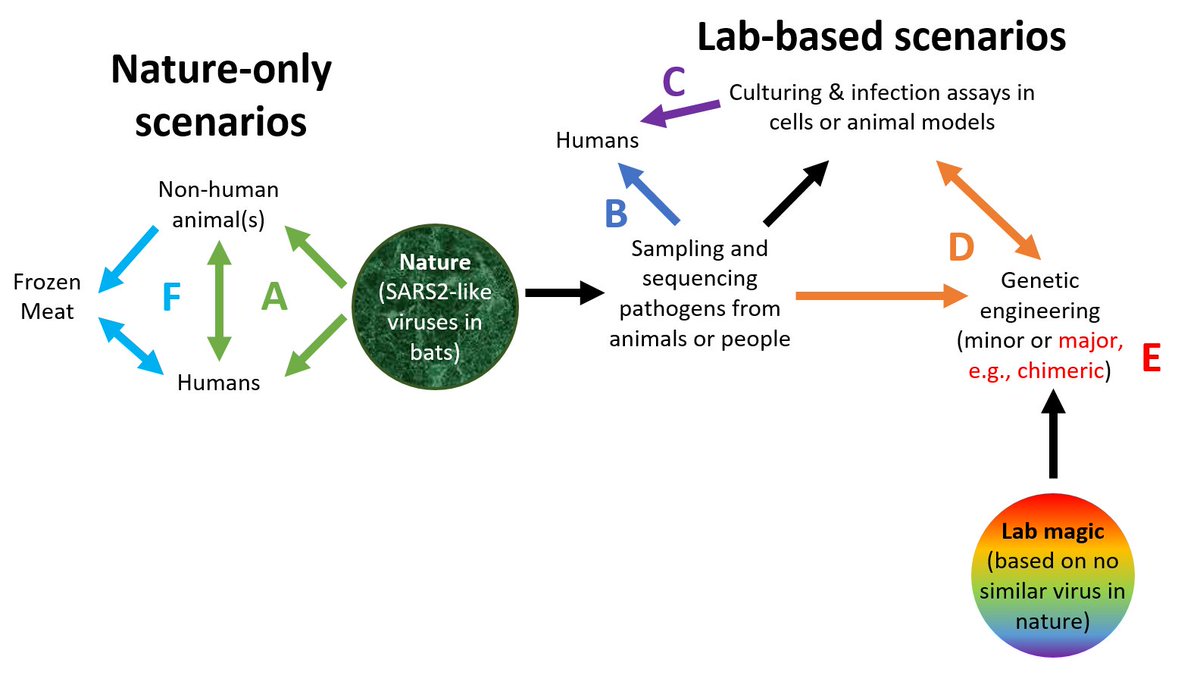
Here is the layperson-appropriate coverage of the Mojiang mine and its relevance to COVID-19’s origins. Thanks! @TheSeeker268 @thetimes play.acast.com/s/storiesofour…
Three major issues by a scientist’s review.
One, most of WIV’s SARS work had been done at BSL2/3 not BSL4. It doesn’t matter what their BSL4 looks like. The work was done at a level where undergrads can be touching their faces and personal belongings with contaminated gloves.
One, most of WIV’s SARS work had been done at BSL2/3 not BSL4. It doesn’t matter what their BSL4 looks like. The work was done at a level where undergrads can be touching their faces and personal belongings with contaminated gloves.
https://twitter.com/ayjchan/status/1285359129264037893
Two, we keep hearing this expert stance that there’s no evidence for lab leak.
Guess what. There’s also no evidence for a natural spillover.
If a lab accident is a baseless conspiracy, then so is an accidental natural spillover.
Guess what. There’s also no evidence for a natural spillover.
If a lab accident is a baseless conspiracy, then so is an accidental natural spillover.
The last issue concerns the term gain-of-function. The person who came up with this phrase probably thought it was super good but it’s actually become a distraction from addressing whether a particular research project has risks of resulting in an outbreak or even a pandemic...
If you’re a scientist in the life sciences, you’ll probably understand that almost every experiment is a gain or loss or perturbation of function.
So the term “gain of function” is meaningless as a way to assess the risk of a particular experiment producing an outbreak.
So the term “gain of function” is meaningless as a way to assess the risk of a particular experiment producing an outbreak.
There’s a particularly pointless fixation on the definition of GOF from the Obama era. TLDR WIV’s work didn’t fall clearly under the “banned” (just paused funding for new projects) definition of GOF research.
Does it matter today? We need to reassess risks of ongoing research🧐
Does it matter today? We need to reassess risks of ongoing research🧐
Trying to gotcha someone on work the scientific community didn’t recognize as risky is counterproductive to fixing the problem today.
They’re going to dig their heels in and insist their work was well-intentioned & not against policy/moratorium at the time. Which is correct.
They’re going to dig their heels in and insist their work was well-intentioned & not against policy/moratorium at the time. Which is correct.
Seriously, please read the “ban” wording. It didn’t apply to novel natural viruses found in the wild. It apparently didn’t even apply to mouse-adapted human pathogens.
This fight about whether the old definition was good or not is detracting from the conversation we need today.
This fight about whether the old definition was good or not is detracting from the conversation we need today.
Someone who is fighting you on the trivial point that their work wasn’t exactly banned under the wording from Obama era - isn’t actually engaging you on whether that work is freaking dangerous and could result in pandemics.
Moreover there’s this obstacle that journalists & science writers have difficulty with: GOF has been associated with work to make viruses more infectious (~22:30 in the podcast), but WIV didn’t fall under this bracket. They were studying genes, not making more infectious viruses.
I know a lot of people are on a “I told you so” spree right now but we have to keep in mind that this work at the WIV was not banned. It was not intended at making viruses that were more infectious or transmissible even if that could’ve been an accidental side effect.
That’s part of the major problem now. How to talk to extremely well-intentioned scientists about objectively evaluating the risks of their arguably non-GOF research.
• • •
Missing some Tweet in this thread? You can try to
force a refresh




